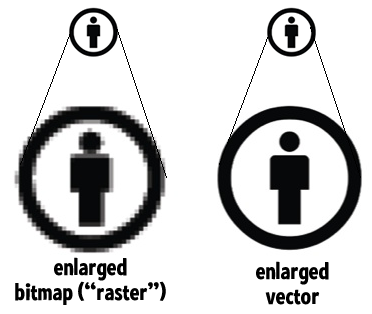In this day and age people are obsessed with graphics, especially when they see the pixels. So why don't graphics designers get around this by using vector based art programs?

That explains what they are.
How it works is that the art is made out of lines, this allows you to zoom in on images without losing quality. This solves the problem of snipers using their snipers rifles to zoom into shoot someone and then see the ugly textures that are very low resolution.

That explains what they are.
How it works is that the art is made out of lines, this allows you to zoom in on images without losing quality. This solves the problem of snipers using their snipers rifles to zoom into shoot someone and then see the ugly textures that are very low resolution.
